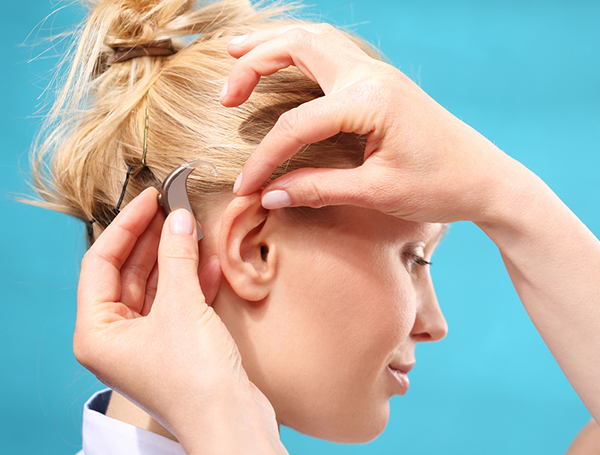4920 Barranca Pkwy, Suite D, Irvine, CA 92604.
At Hoffmann Audiology & Hearing Aid Center, we work with all major manufacturers to provide you with a comprehensive selection of Bluetooth-enabled wireless hearing aids. These hearing aids are available in many styles, including both in-the-ear and behind-the-ear models. Dr. Hoffmann will fit, adjust, and program your Bluetooth hearing aids for the best hearing possible.
Bluetooth is a method of communicating between electronic devices using high-frequency radio waves. Used in hearing aids, this means that the wearer can have sounds from devices like cell phones and TV sets “streamed” wirelessly into the ears. This results in better clarity and sound quality with less interference from background noise. There are two types of Bluetooth used in hearing aids:

The “original” Bluetooth allowed the hearing aid user to connect with virtually any Bluetooth audio device. The downside was that an “intermediary” device – usually a small disk or box worn on a neck loop – was required to “translate” between the hearing aids and the audio device. While some hearing aid users were willing to put up with this restriction, many were not, and this resulted in a relatively low adoption rate.
Bluetooth Low Energy (BLE) hearing aids were introduced in 2014 and were intended to solve the problem of the intermediary device. These were the first hearing aids that could be connected directly to audio devices without the need for neck loops or other gadgets. The downside was that they were only compatible with Apple phones and iPads. For Apple users, they are still a very good solution and are available from a number of major manufacturers.
The newest development is “Made For All” technology. In 2018, a Swiss hearing aid developer became the first to overcome the technological limitations that had prevented direct connection between hearing aids and Classic Bluetooth devices. There are currently two major manufacturers offering “Made For All” hearing aids which are compatible with just about any Bluetooth audio device.
Bluetooth is one of the most rapidly developing technologies in hearing aids, and as you can see, keeping track of it can be a challenge. Dr. Hoffmann stays up-to-date on all the new developments and is happy to discuss your individual requirements.
Most users will find that the primary advantage is with the cell phone. Talking on the phone – as opposed to face-to-face – can already be difficult for people with hearing loss. The cell phone, with its small, tinny speaker, can make it even tougher, and trouble communicating through a cell phone is one of the most common complaints we hear at Hoffmann Audiology. With Bluetooth hearing aids, you can make and receive cell phone calls through your hearing aids at the touch of a button. This allows the hearing aids to amplify the call to your prescription level, giving you much better clarity and sound quality. It can also satisfy the California “hands-free” requirement for cell phone use while driving.
Another common use of Bluetooth hearing aids is TV viewing. With your hearing aids paired to your TV, you will hear the sound directly through the hearing aids at whatever volume you would like, while other listeners can set the volume of the TV itself to a comfortable level for them.
We also have patients using their Bluetooth hearing aids for listening to personal music players, audio books, and even computers and tablets. Essentially, any Bluetooth device can be linked to your hearing aids for clean, clear sound adjusted to your prescription.
At Hoffmann Audiology, we have more than a decade of experience with Bluetooth hearing aids. For more information or to set up a trial of the latest Bluetooth technology, contact us at
949-536-5180.
Click the button below to schedule appointment with us.
Appointment Request